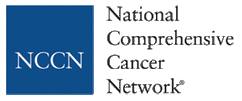The Joan Gaeta Lung Cancer Fund Supports
Efforts in Research for the Early Detection of Lung Cancer
The need for a method for early detection of Lung Cancer is critical. I will undoubtedly improve survival rates that have hovered around 15.5% for over 40 years. To date, the only method available is low-dose computed tomography (CT) scans. The results of the National Lung Screening Trial (NLST) were released in June 2011 and confirmed that low-dose CT scans do indeed save lives.
In addition, the International Early Lung Cancer Action Program (I-ELCAP) has been in existence since 1992 and, while not a randomized study, has released many findings similar to those of the NLST.
There are many early detection methods currently being studied, among them breathalyzers, sputum tests, blood tests, imaging tests, and cheek swabs. Our parent organization of whom we are an affiliate, the Bonnie J. Addario Lung Cancer Foundation (BJALCF), supports these efforts in research and their Scientific Advisory Board has awarded grants in some of the areas being studied.
In addition, the International Early Lung Cancer Action Program (I-ELCAP) has been in existence since 1992 and, while not a randomized study, has released many findings similar to those of the NLST.
There are many early detection methods currently being studied, among them breathalyzers, sputum tests, blood tests, imaging tests, and cheek swabs. Our parent organization of whom we are an affiliate, the Bonnie J. Addario Lung Cancer Foundation (BJALCF), supports these efforts in research and their Scientific Advisory Board has awarded grants in some of the areas being studied.
A word from Pierre Theodore, Thoracic Surgeon at the University of California San Francisco

"The evidence in favor of screening for lung cancer is accumulating rapidly and it is becoming ever more difficult to resist the idea that early detection is associated with improved outcomes. While tremendous progress has been made in treating lung cancer in more advanced stages of lung cancer, our best results may be achieved when tumors are discovered while still small. The recent randomized prospective data – the gold standard for evidence-based medicine – is a call to action for clinicians and policy makers alike on behalf of our patients to be vigilant in at-risk individuals. CT scan screening among other biotechnologies represents an important tool in the ongoing effort to combat lung cancer."
Pierre R. Theodore, M.D.
Associate Professor of Surgery, Division of Adult Cardiothoracic Surgery,
Van Auken Endowed Chair in Thoracic Oncology - University of California San Francisco
Pierre R. Theodore, M.D.
Associate Professor of Surgery, Division of Adult Cardiothoracic Surgery,
Van Auken Endowed Chair in Thoracic Oncology - University of California San Francisco
The 2011 National Lung Screening Tria
for Early Detection of Lung Cancer
The National Lung Screening Trial (NLST) was a national study with 53,454 current or former heavy smokers participating that compared low-dose spiral CT and standard chest X-ray to screen for Lung Cancer to discover if one method or the other reduced deaths by finding tumors at an early, and therefore, more treatable stage. The trial began in 2002 and the findings were published in the New England Journal of Medicine on June 29, 2011: click here to read the article.
The researchers conducting the NLST found 20 percent fewer Lung Cancer deaths among trial participants screened with low-dose helical CT when compared to chest X-ray. Statistically, this is an important finding because it means that it was not due to chance but to CT screening. Click here to read about the results of the National Lung Screening Trial (NLST).
The researchers conducting the NLST found 20 percent fewer Lung Cancer deaths among trial participants screened with low-dose helical CT when compared to chest X-ray. Statistically, this is an important finding because it means that it was not due to chance but to CT screening. Click here to read about the results of the National Lung Screening Trial (NLST).
National Comprehensive Cancer Network (NCCN) Guidelines
for CT Scans for Early Detection of Lung Cancer

Based on the NLST study results, the NCCN has release its own guidelines for who should be screened for early detection of Lung Cancer. You can read the NCCN Guidelines for base-line CT screening for Lung Cancer by clicking here.
Note: You must register on the NCCN website in order to download the pdf of NCCN Guidelines for Detection, Prevention, & Risk Reduction for Lung Cancer Screening.
Note: You must register on the NCCN website in order to download the pdf of NCCN Guidelines for Detection, Prevention, & Risk Reduction for Lung Cancer Screening.
International Early Detection Action Program (I-ELCAP)
Since its founding in 1992, I-ELCAP’s members have published many findings based on their studies:
To read about I-ELCAP, click here.
- Curability of Stage I lung cancers is 80-90%
- Annual CT screening allows at least 80% of lung cancers to be diagnosed at Stage I
- CT screening creates a counseling opportunity that results in greater smoking cessation
- Costs of CT screening for lung cancer compare favorably with breast, cervical, and colon cancer screenings
To read about I-ELCAP, click here.

